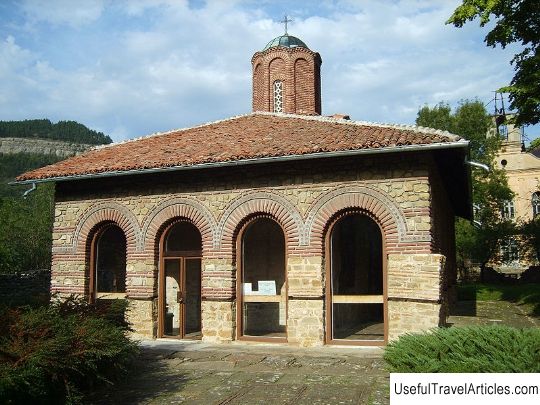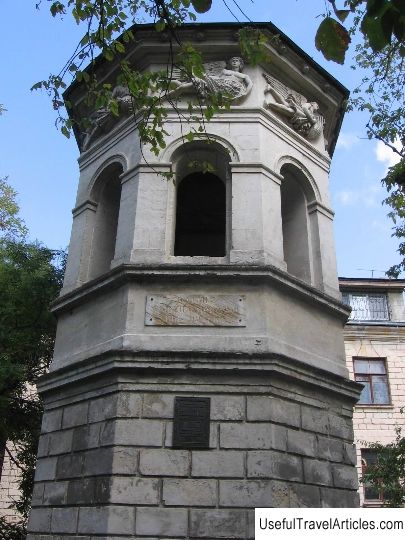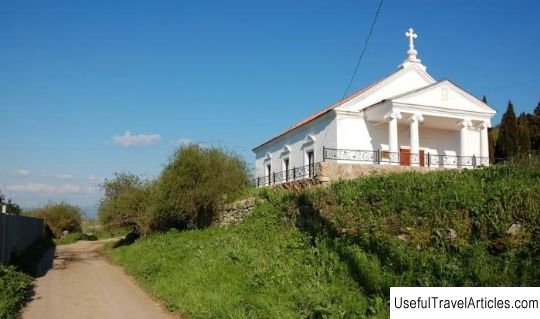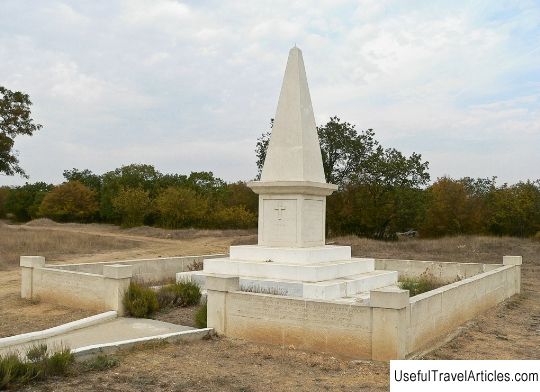Peter and Paul Church description and photo - Crimea: Sevastopol
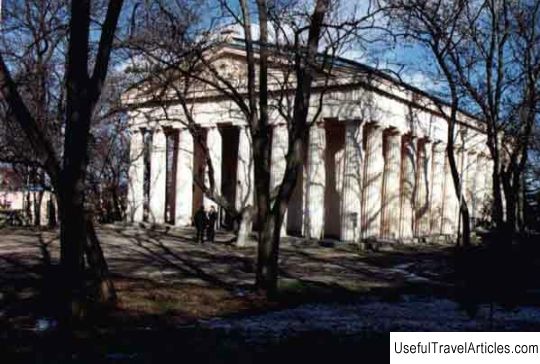
Peter and Paul Church description and photo - Crimea: Sevastopol. Detailed information about the attraction. Description, photos and a map showing the nearest significant objects. Photo and descriptionAn imposing building stands on a city hill in the middle of a green square. It is an architectural monument and a historical monument. The church resembles an ancient Greek temple in shape. It was built according to the canons of Russian classicism. 1848 is the year of the construction of the building. This follows from the inscription on the security board. But historians have established a more accurate date - 1844. This is a rectangular structure, it is surrounded by forty-four massive columns made of limestone of Sarmatian origin. Vertical grooves cut through the surface of the columns, which is why the building is perceived as more noble and slender. Previously, there was a wooden church built in the name of Peter and Paul in 1792. It was built by the Greeks from Anatolia, who lived in a colony in Sevastopol. At the beginning of the nineteenth century, the church began to collapse. And the commander-in-chief of the Black Sea Fleet Lazarev M.P. in 1838 he took to St. Petersburg a new project of the Peter and Paul Church. The admiral cared a lot about the improvement of the city, so he personally took up a new project. Engineer V.A. Rulev performed all the calculations and presented a new model to St. Petersburg. 1840 - the date of the start of construction. The work was carried out for four years. By the time they were finished, life-size statues of Peter and Paul, made of marble, had been delivered from Italy. They were placed in niches at the main entrance. The statues were copies of the works of the Italian sculptor Thorvaldsen. They were made by Fernando Pellichio, the works of the same master are on the Count's pier. The fate of the church was not easy. Services continued in the first days of the defense. But in August 1855, the bells were broken, the bell tower was destroyed, and a hole appeared in the ceiling from the enemy core. The building burned down in September. Only the bell tower remained intact. Only after the restoration work in 1887-1888 was the appearance of the church restored. In the Soviet years, the building housed the State Archives of Sevastopol. During the Great Patriotic War, the Germans destroyed some of its parts, but in 1946 the restoration work was completed. In the post-war years, the local drama theater was located here. The theater staff was small, but prepared several worthy performances. Three or four performances were held on holidays and weekends. The actors were happy to bring their art to the residents of the city. Since 1950, the building has been occupied by the House of Culture. there was a break in the ceiling from an enemy core. The building burned down in September. Only the bell tower remained intact. Only after the restoration work in 1887-1888 was the appearance of the church restored.In the Soviet years, the building housed the State Archives of Sevastopol. During the Great Patriotic War, the Germans destroyed some of its parts, but in 1946 the restoration work was completed. In the post-war years, the local drama theater was located here. The theater staff was small, but prepared several worthy performances. Three or four performances were held on holidays and weekends. The actors were happy to bring their art to the residents of the city. Since 1950, the building has been occupied by the House of Culture. there was a break in the ceiling from an enemy core. The building burned down in September. Only the bell tower remained intact. Only after restoration work in 1887 - 1888 was the appearance of the church restored.In the Soviet years, the building housed the State Archives of Sevastopol. During the Great Patriotic War, the Germans destroyed some of its parts, but in 1946 the restoration work was completed. In the post-war years, the local drama theater was located here. The theater staff was small, but prepared several worthy performances. Three or four performances were held on holidays and weekends. The actors were happy to bring their art to the residents of the city. Since 1950, the building has been occupied by the House of Culture. Only after restoration work in 1887-1888 was the appearance of the church restored.In the Soviet years, the building housed the State Archives of Sevastopol. During the Great Patriotic War, the Germans destroyed some of its parts, but in 1946 the restoration work was completed. In the post-war years, the local drama theater was located here. The theater staff was small, but prepared several worthy performances. Three or four performances were held on holidays and weekends. The actors were happy to bring their art to the residents of the city. Since 1950, the building has been occupied by the House of Culture. Only after restoration work in 1887 - 1888 was the appearance of the church restored.In the Soviet years, the building housed the State Archives of Sevastopol. During the Great Patriotic War, the Germans destroyed some of its parts, but in 1946 the restoration work was completed. In the post-war years, the local drama theater was located here. The theater staff was small, but prepared several worthy performances. Three or four performances were held on holidays and weekends. The actors were happy to bring their art to the residents of the city. Since 1950, the building has been occupied by the House of Culture. but in 1946 the restoration work was completed.In the post-war years, the local drama theater was located here. The theater staff was small, but prepared several worthy performances. Three or four performances were held on holidays and weekends. The actors were happy to bring their art to the residents of the city. Since 1950, the building has been occupied by the House of Culture. but in 1946 the restoration work was completed.In the post-war years, the local drama theater was located here. The theater staff was small, but prepared several worthy performances. Three or four performances were held on holidays and weekends. The actors were happy to bring their art to the residents of the city. Since 1950, the building has been occupied by the House of Culture.      We also recommend reading English park and flower clock (Jardin Anglais) description and photos - Switzerland: Geneva Topic: Peter and Paul Church description and photo - Crimea: Sevastopol. |

